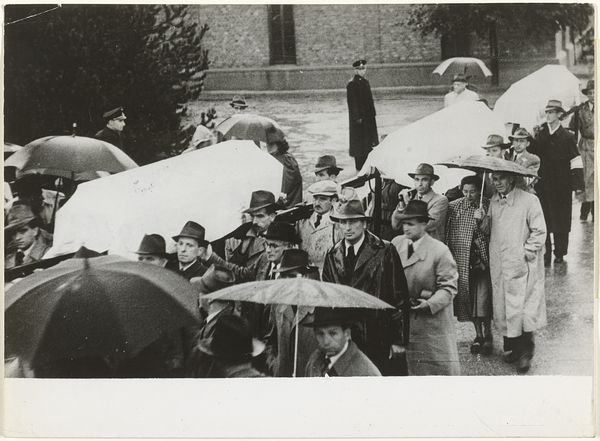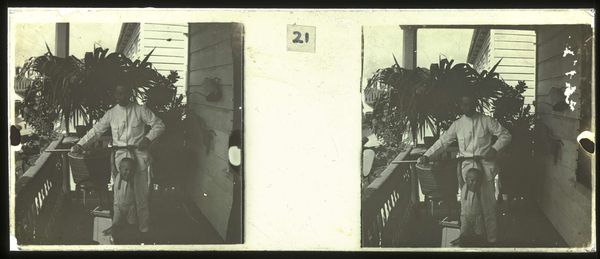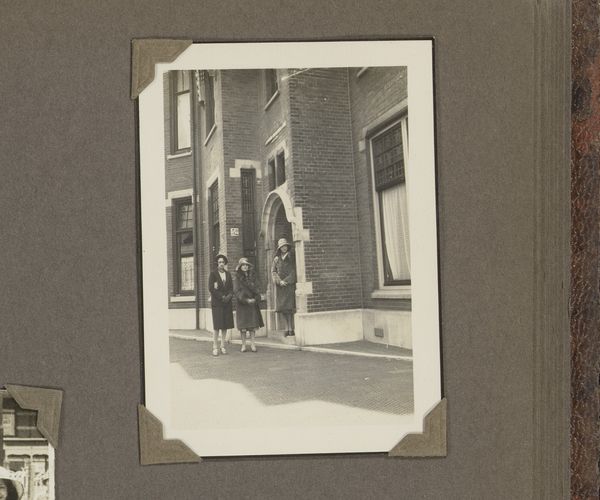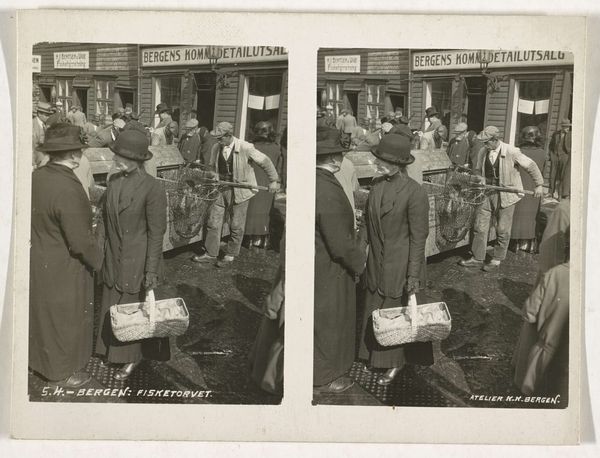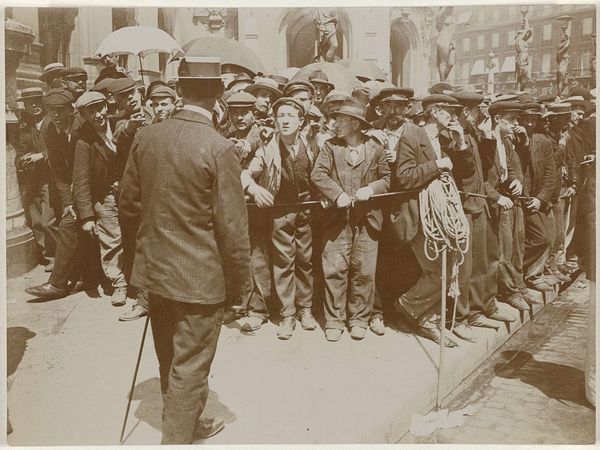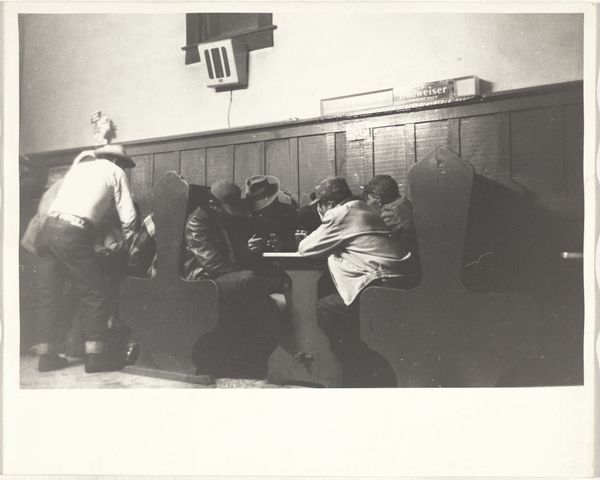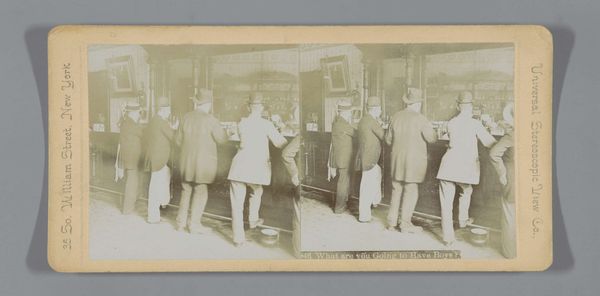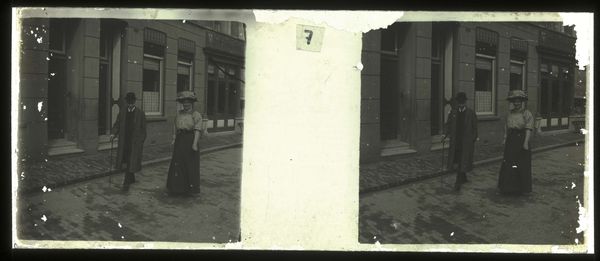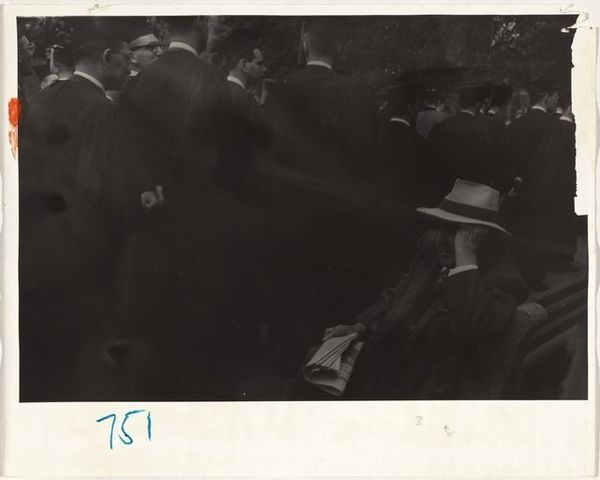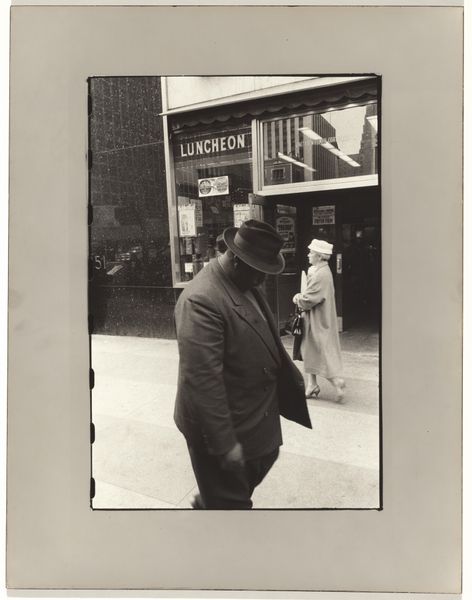
Koningin Wilhelmina en prins Hendrik bij het verlaten van de Pieterskerk te Leiden 1925
0:00
0:00
print, photography, gelatin-silver-print
#
portrait
#
print photography
# print
#
archive photography
#
photography
#
historical photography
#
gelatin-silver-print
Dimensions: height 88 mm, width 138 mm
Copyright: Rijks Museum: Open Domain
Editor: This photograph by Joh. Geijtenbeek, taken in 1925, is titled "Koningin Wilhelmina en prins Hendrik bij het verlaten van de Pieterskerk te Leiden," and it seems to capture a somber moment as the royals exit the church. I notice the presence of armed guards and a waiting car. How do you interpret this work within its historical context? Curator: That's a keen observation. This image encapsulates a very specific intersection of power, religion, and national identity. Think about the 1920s – a period of reconstruction after World War I, where monarchies were grappling to maintain relevance amidst rising social and political upheaval. How do you think staged public appearances like this one played into shaping public perception of the royal family? Editor: It strikes me as an effort to project stability and tradition, a way to visually reinforce their authority, especially in times of uncertainty. Curator: Precisely. Consider the setting—a church. What does that choice of venue communicate to the public about the royal family’s values and their relationship with the Dutch people? And how does the very act of photographing and disseminating images like this contribute to the construction of a specific narrative around the monarchy? Editor: It implies a divine right to rule, perhaps? And circulating it makes it seem like a shared cultural experience, strengthening their image across different social strata. I'm beginning to see how this image is not just a snapshot, but a deliberate piece of visual rhetoric. Curator: Exactly. So, by exploring the complex social, political, and cultural landscape of the time, we can deconstruct the intended message of the image and understand its lasting impact. Editor: I’m amazed at how much a seemingly simple photograph can reveal about an era. Thanks for unveiling those extra layers. Curator: My pleasure. It’s through these dialogues that we bridge the gap between art history and our contemporary understanding of power and representation.
Comments
No comments
Be the first to comment and join the conversation on the ultimate creative platform.
